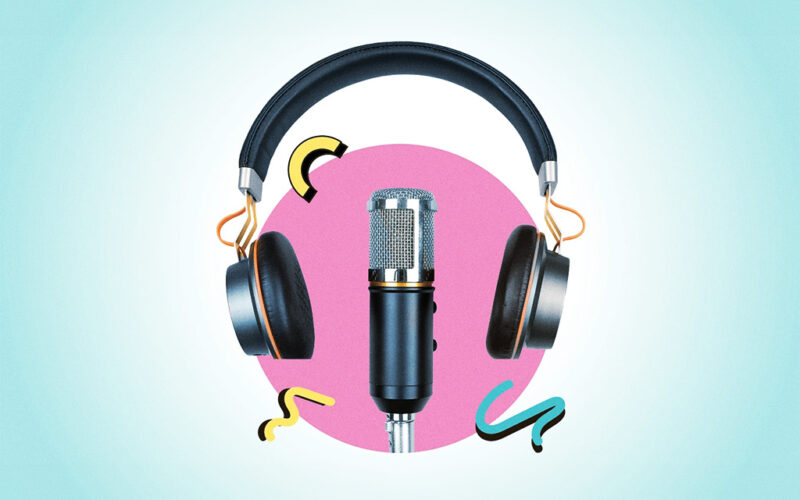Podcasting has become an increasingly popular way to share stories, opinions, and knowledge with the world. To make sure that your podcast sounds professional and engaging, it’s important to pay attention to the quality of your audio recordings. Below are some simple tips and tricks to ensure your podcast sounds professional, so you can focus on creating engaging and compelling content.
Recording Tips
#1 Equipment
It’s important to have the right equipment to record your podcast. You’ll need a computer, laptop, or other device, an audio interface, one microphone per host, and software capable of multitrack recording. Get these things in order before proceeding with your recording.
#2 Environment
Choosing where to record your podcast is a critical decision. We recommend recording in a small, quiet, and carpeted room, preferably with heavy curtains as they’re helpful for absorbing sound reflections. We also suggest avoiding rooms with lots of hard surfaces such as hard floors and large windows. If you’re the handy sort, you can create your own acoustic panels – tutorials on how to do this can be found on YouTube. Worst case scenario, if your space sounds echo-ey, drape a blanket over yourself and your mic.
#3 Noise
To give your podcast sound quality the best chance of success, eliminate as much background noise as possible. Microphones are highly sensitive and will pick up even the slightest of noises whether it be the whirring of a fan, the click of a mouse, or the neighbour’s dog barking outside. Which, unless you’re recording a podcast about the neighbour’s dog barking, is less than ideal.
#4 Mic Placement
For optimal voice recording, microphones should be about 10cm away and pointed directly at your mouth. When hosting, make sure your guests’ mics are pointing in opposite directions from each other. This ensures each guest and host has their voice recorded clearly, so your podcast sounds less like a gaggle of geese and more like a professional piece.
#5 Pop Filters
Get the professional sound you’re looking for with Pop Filters. This innovative tool helps you reduce those annoying “popping” sounds produced by plosive letters such as B, P, and T, making your voice smoother and reducing the need for extra editing. For instance, the sentence “Please put those ten tiny toddlers back to bed” has the potential to sound disastrous without a Pop Filter.
#6 Recording Level
When podcasting, you should ensure your levels are just right. Peaking between -12dB and -6dB is great. If it’s too quiet, it can introduce a hiss, but if it’s too loud, it will sound distorted. Find that sweet spot and you’re good to go!
#7 Recording Quality
For the ideal quality, recordings should have a sample rate of at least 44.1kHz and a bit depth of 16bit. Ensure these attributes remain intact when saving as an MP3 or WAV file.
#8 Room Profile
For maximum noise reduction, we recommend recording a room profile. What’s a room profile I hear you ask? It’s a simple 10 second recording of your space, with no talking, and to help isolate any unwanted room sounds.
#9 Relax, you’re not live on-the-air
Remember, you’re not recording live. The beauty of this means you can take a break when you need it. Also, long pauses, mistakes, unexpected interruptions, and false starts can be edited out post-production. So, if you introduce Idina Menzel as Adele Dazeem, you award an Oscar to “La La Land” instead of “Moonlight”, or you simply receive a poorly timed phone call, you can fix it so your listeners hear what you want them to! Relax and enjoy the process.
Important things to note about editing
There are also a few factors that should be considered when it comes to editing. While most things can be chopped, changed, and enhanced, not all issues can be solved. In other words, there’s not a lot that can be done with poorly recorded audio.
- Multiple voices recorded on one channel, or with one mic, aren’t able to be separated.
- Audio recorded in an echoey space can only be restored to a certain level, and not necessarily fixed.
- Unwanted noises are not always able to be removed.
- Audio recorded too loud will be distorted. This can be improved upon but not fixed entirely.
- To prevent an unprofessional result, avoid recording audio with low-fidelity attributes – less than 44.1kHz 16bit.
Conclusion
In conclusion, recording a high-quality, professional podcast is achievable if the above simple steps are followed. Remember, source the correct equipment and software, record in an ideal space, be mindful of background noise, place your mic 10cm away, use pop filters where possible, ensure your recording levels are just right, use the optimal recording sample rate, record a room profile, and don’t be afraid to take breaks. By following these tips, your podcast recording will be clearer, and ultimately, more professional.

